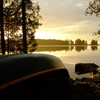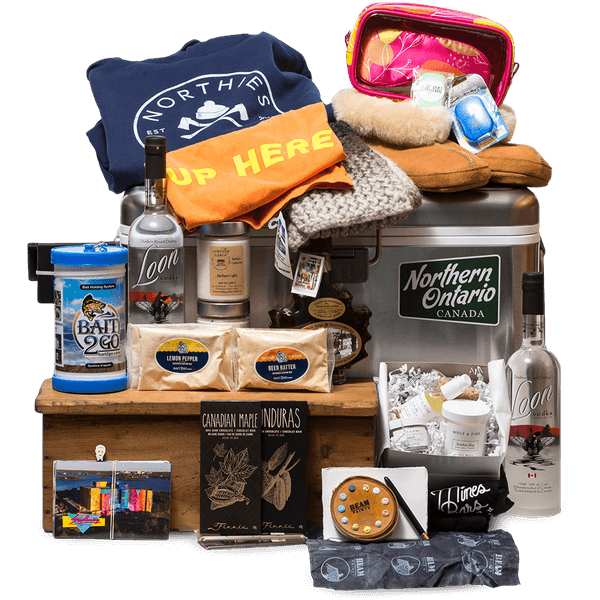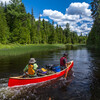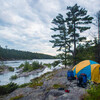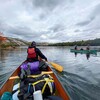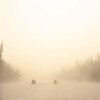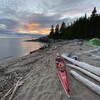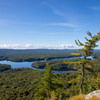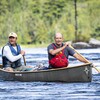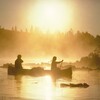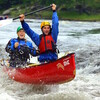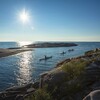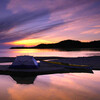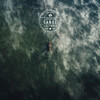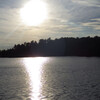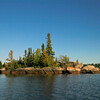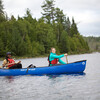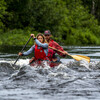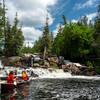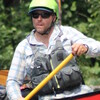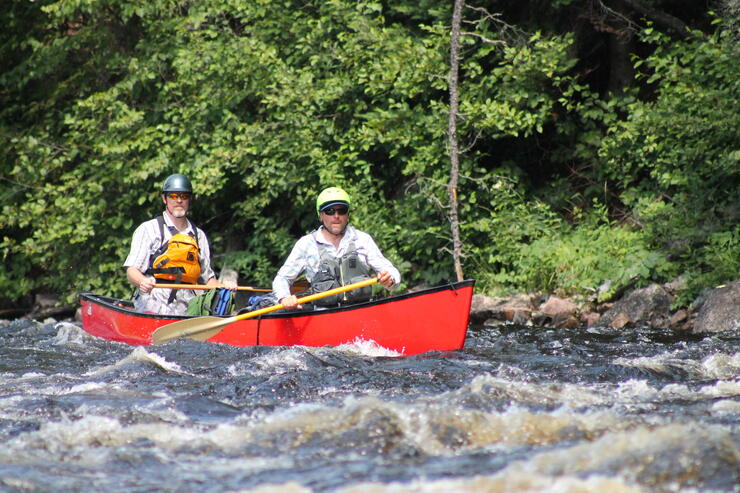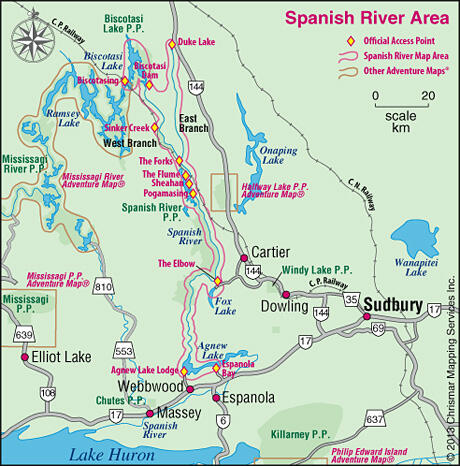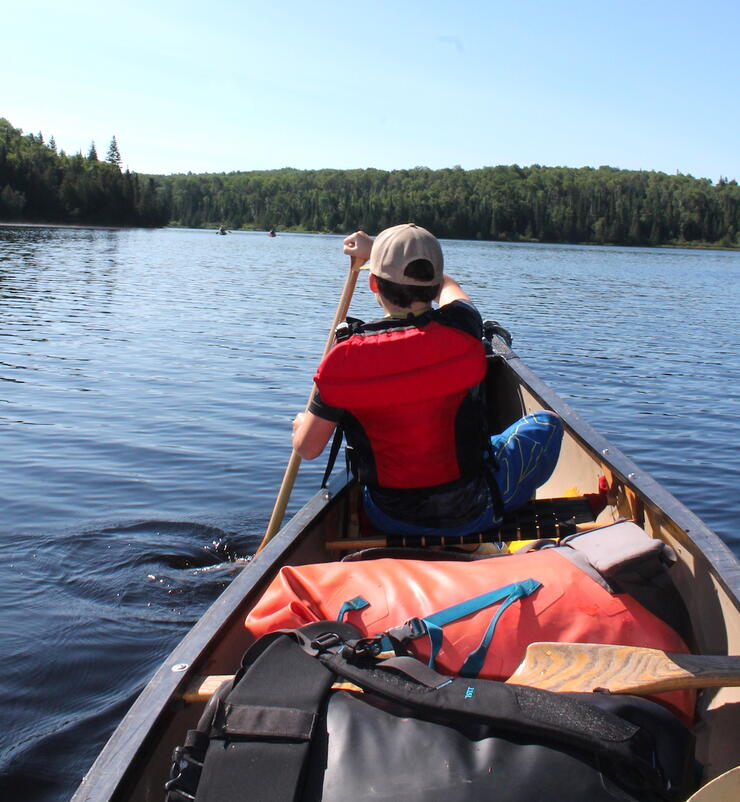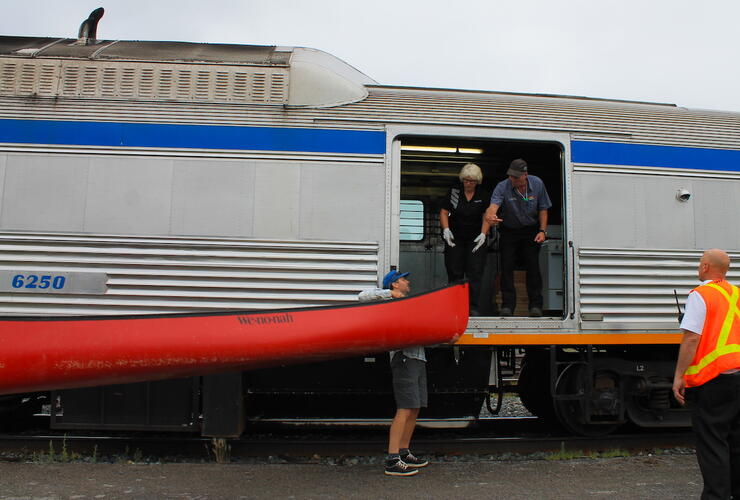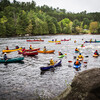
Everything You Need To Know To Plan A Spanish River Canoe Trip
If I were to design the ultimate introductory river for a whitewater canoe trip, it would look an awful lot like the Spanish River. It has all the required ingredients: it feels remote but is easy to get to; it has beautiful wilderness scenery, ranging from boreal forest to cliffs to open valley; it is a provincial park waterway so has marked campsites and portages; there are different options for how to run it; best of all, it has lots of easy rapids and kilometres worth of fast-moving swifts, affectionately known as “boogie water.”
I think of the Spanish nostalgically, since it was my first whitewater canoe trip way back when I was a teenager. After spending the intervening years working as a whitewater guide all across the continent, where do you think I took my kids last summer for their first whitewater canoe trip? A Spanish River canoe trip was the perfect place to start.
Anybody can do this trip. But which one? There are options. Here’s a quick geography primer: the Spanish is less than an hour northwest of Sudbury, and runs from the north to south. The river is shaped like the letter Y, with two branches that meet at The Forks, then continue on as one. If you are new to whitewater canoeing, then take the East Branch: it starts with calm lakes, then adds some easy swifts, and sprinkles in some rocks along the way toward novice-worthy class II rapids.
But if you have some skills and are looking for a challenge, then the West Branch is for you. This options starts as class III with a half-dozen rocky rapids, a portage or three, and then merges at The Forks for lots of easy boogie water.
Last summer, my wife and I sterned the canoes, while the boys paddled from the bow. We went in late July, the water was low, and bugs were minimal until dusk. We fished, swam several times a day, and let the current pull us along.
My boys loved the modest rapids, which gave them a sense of confidence without any real stress, and we only portaged twice.
The perfect river? It sure seemed like it.
PLAN YOUR Spanish River canoe TRIP NOW
Spanish River Canoe Routes
Kevin Callan outlines the East Branch route in the Top 50 Canoe Routes of Ontario book. It takes 5 to 6 days, has 11 portages and is 142 km long. It starts at Duke Lake and follows the east branch of the river. It finishes at Agnew Lake Lodge. The East Branch of the Spanish is a great introduction to white water paddling (except in high water).
The West Branch is a little more remote with more rapids to paddle. It is suitable for more experienced paddlers. There are portages around every rapid so it can be used as a “practice” white water route.
For a first-ever trip, I suggest you take the train up to The Forks, where you can take two or three days to get down to The Elbow, a notable bend in the river with road access. The East Branch—the next easy option, with the upper lakes and easy swifts—is long, at 100 km over six or seven days. Likewise, the West Branch has a longer option, from Biscotasi Lake, but it doesn’t get you much more whitewater. Below The Elbow, experienced paddlers might appreciate a series of big rapids and portages, but the real draw is an additional 20 km of swifts. This option adds 50 km and ends at Agnew Lake.
The local outfitters can provide you with excellent Spanish River canoe route trip route planning services.
Camping permits and reservations
Camping reservations are not available at this park. All campsites are first-come, first-served.
Interior camping permits are required for backcountry camping at Spanish River Provincial Park. Permits can be purchased online up to two weeks in advance of your arrival date.
Interior camping permits may also be obtained from Chutes, Windy Lake, and Halfway Lake Provincial Parks, or from a local permit issuer. For a complete list of local permit issuers please contact the park office.
Spanish River access Points
These are some of the most commonly used access points.
- Duke Lake, offers a boat launch and privy
- The Elbow
- Bisocasting, most popular access point for whitewater paddlers
- Agnew Lake, most popular takeout point
- Bannerman Creek
- Various stops along the Via Rail, including Sinker Creek and Forks
Canoe Rentals for the Spanish River
Spanish River Outfitters will provide the ultimate Northern Ontario wilderness experience. They provide planning services, canoe outfitting services (canoe rentals, camping equipment) and shuttle service. Stay at Fox Lake Lodge before and after your trip.
Agnew Lake Lodge provides canoe outfitting services (canoe rentals and camping equipment rentals) as well as shuttle service. Plus you can purchase your Spanish River Provincial Park permit at the lodge. Stay at the lodge before and after your trip.
True North Airways (Fly-in Canoe Trip Adventures) offer a fly-in service with your own canoe or you can rent one from them. Avoid the hassels of shuttling vehicles. Board a bush plane called the Beaver and get dropped off at their outpost camp on Biscotasi Lake, a great starting point for a 3, 5 or 7-day Spanish River canoe trip.
Via Rail Baggage Car Service For The Spanish River
Maybe the ultimate thing about this river? You can take the train!
Via Rail runs its Baggage Car service (affectionately known as the “Budd Car”) parallel to the West Branch. You can put your canoe and all your gear on. Just tell the engineer where to drop you.
We boarded at the village of Cartier and got off at Sinker Creek, our gear was hustled out to us, and just like that, the train left us on the side of the track. From here, we had five easy days to paddle 70 km back to our car. (The train only runs on certain days of the week, and weekends often sell out, so book in advance).
Guided Canoe Trips on the Spanish River
Trip: MHO Adventures - Adventurous Women on the Spanish River
Date: August 24 to 29, 2023
This adventure is for any woman out there who wants to take on the challenge of a whitewater canoeing expedition with lots of support and coaching from guides, time to relax and get away, and enjoy a beverage by the fire with fellow women. Ideal for friends; mothers and daughters; trans-women, cis-women and gender non-conforming persons; and any solo travellers out there who are 19 and older. The trip begins with a train ride into Spanish River Provincial Park from Sudbury. Guides will spend time on whitewater instruction to prepare everyone for the upcoming six days of fun whitewater paddling covering over 103km.
Trip: MHO Adventures - Family Adventure on the Spanish River
Date: August 12 to 17, 2023
This trip is perfect for any family looking to challenge themselves with whitewater paddling, and get away from their busy everyday lives to experience nature with other like minded folks. Enjoy paddling and swimming in dark blue waters, fishing, classic Canadian Shield wilderness, and even try to spot a moose as you paddle down the beautiful Spanish River. The trip begins with a train ride into Spanish River Provincial Park from Sudbury. Guides will spend time on whitewater instruction to prepare everyone for the upcoming six days of fun whitewater paddling covering over 103km.
Trip: Black Feather - Spanish River Getaway - West Branch
Date: July 22 to 26, 2023
The Spanish River Getaway offers paddlers beautiful scenery, an ever-changing landscape, few portages and some great whitewater challenges. Beginning in Sudbury, you will meet your group and guides and hop on the historical “Budd Car” to start your journey down the Spanish River’s West Branch at The Forks. From there, four and a half days’ worth of paddling, portaging, rapid scouting and rapid running await you.
Trip: Agnew Lake Lodge Guided Canoe Trip
Date: Upon request
Contact Agnew Lake Lodge to arrange for a guided trip for any level of paddler.
Spanish River Canoe Route Map
The best Spanish River canoe route map is The Adventure Map by Chrismar Mapping. It is an exceptionally detailed 1:60,000 scale topographic map that shows the rapids, falls, swifts, campsites, portages, access points and more. You can purchase it for $15.95 plus shipping.
Recommended Articles
Train-In Adventure

Get On The Water
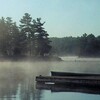
Best Places To Canoe Trip
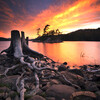
Killarney Canoe Trips

Ultimate Guide To Wabakimi
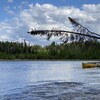
Woodland Caribou’s Most Exquisite Lakes
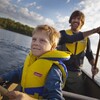
Paddling Laws
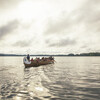
Indigenous Outdoor Adventure Experiences
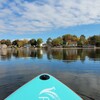
SUP North Bay
Get the most out of summer
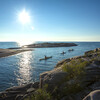
9 Best Day Trips by Canoe and Kayak
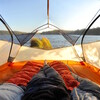
Instagram vs Reality
Paddle with Your pup
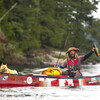
tips and tricks
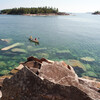
Spectacular and diverse scenery
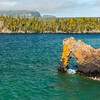
breathtaking views
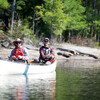
Find Wilderness South of Algonquin
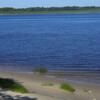
James Bay and Hudson Bay
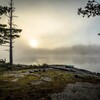
Culinary Canoe Trips
